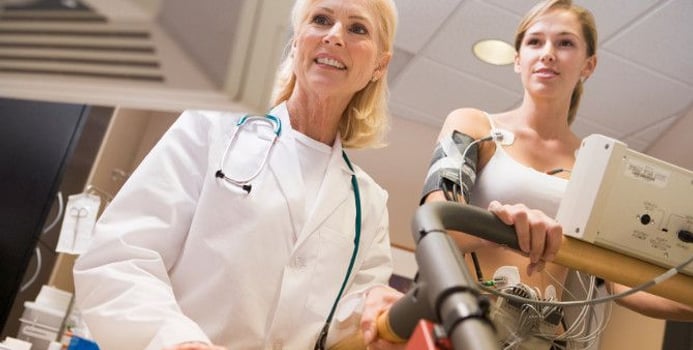The cardiovascular system is an organ system comprised of the heart, blood and blood vessels. The cardiovascular system forms a part of the circulatory system, which circulates blood, lymph and oxygen throughout the body. The cardiovascular system works in conjunction with the digestive system to move nutrients throughout the body, and is also closely related to nervous system function. Here are some facts and functions of the cardiovascular system.
1. The Heart is at the Center of the Cardiovascular System
The heart pumps oxygenated blood to the body and deoxygenated blood to the lungs. The heart has four chambers; one atrium and one ventricle for pumping oxygenated blood, and one atrium and one ventricle for pumping deoxygenated blood. The left side receives oxygenated blood from the lungs and pumps it, through the aorta, to the rest of the body. The right side receives deoxygenated blood and pumps it back to the lungs.
2. Arteries Carry Blood Away from the Heart
Arteries carry oxygenated, nutrient rich blood away from the heart, to distribute it among the tissues of the body. The thick walls of your arteries contain muscle that absorbs the pressure of the heart beat and helps slow down the flow of the blood. Arteries are often located very close to the surface of the skin. You can feel the pressure of your arterial heart beat in your wrist when you take your pulse.
3. Veins Carry Blood Back to the Heart
Veins carry deoxygenated blood back to the heart, so it can be pumped into the lungs where it will gather more oxygen. Veins have thinner walls than arteries, because, by the time your blood reaches your veins, it has lost much of the pressure it had when it was pumped out of the heart. Veins are usually located further beneath the skin than arteries.
4. Arterioles and Capillaries Ensure that Blood is Distributed to All Organs
Arteries divide into smaller blood vessels known as arterioles. Arterioles then divide into much smaller blood vessels called capillaries. Capillaries are so small that one arteriole can provide blood for as many as one hundred capillaries. Arterioles and capillaries distribute blood to every part of every organ of your body.
5. Capillaries Join Together to Form Veins
Once your capillaries have distributed blood evenly throughout all the organs of your body, they then join together to form small veins, which in turn join together to form larger veins. These main veins carry deoxygenated blood back to the heart, where it enters the pulmonary arteries at the right side of the heart. These arteries send your blood back through the lungs, where it picks up oxygen before entering the left atrium of the heart to be pumped back into your arteries and recirculated around the body.
6. Your Cardiovascular System Works Together With All Your Other Systems
Your cardiovascular system is the system that ensures that oxygen from your lungs travels throughout your body, including to your brain, where it's needed for nervous system function. Your cardiovascular system also carries nutrients from your digestive system throughout your body's tissues, where your cells use them to make energy.



